GES280 - Volterra Asylum
One of the reasons i enjoy exploring, is that one often ends up in places you'd never have gone. I had no idea the town of Volterra existed, let alone knew it to be a travel destination. While holidaying with the family in Tuscany, I opted to 'disappear' for a morning, and went to explore this asylum. On seeing the picturesque town of Volterra, I came back with my family to explore the town and have lunch in the main square under a warm Tuscan sun. Which was nice, because it pee'd down the rest of the holiday!
Some rather depressing history...
This Italian hospital was started in 1888, as a ward for the demented in the poorhouse of the former convent of San Girolamo. In 1902, the ward was named Frenocomio (which means psychiatric hospital) San Girolamo. Under the somewhat worryingly named Dr. Luigi Scabia, the institution underwent expansion with the creation of shops, services, an agricultural company, and a judicial section. Dr. Scabia’s plan was to build an independent village in which patients autonomy, but also to put into effect a plan of work tailored to each patient in order to direct their reinsertion into society after hospitalisation. Expansion continued in the 1950s and 60s, until Volterra became one of the largest asylums in the country.
However due to dubious practices being carried out in Asylums in Italy, including unorthodox practices like electro-shock therapy and insulin induced comas. Patients could be sent to the asylum for having the first signs of depression or schizophrenia, even trivial accusations of political or moral transgressions. They'd join up to 6000 other people in the Ferri Pavilion, where conditions were bad, including one toilet per 100 people. The isolated nature that Dr. Scabia had envisaged to help patients, became the asylum's downfall, as nurses began to be referred to as 'guards' or 'superiors.' A Dr. Mengella type attitude became established, where doctors would test new pills and potions without regard for the patients safety or outcome. Many patients ended up with irreversible consequences from these 'treatments.' Nurses were told they didn't have to correspond or inform patients relatives, enforcing the isolation of patients. Things came to a head in 1978, with the passing of the Basaglia law, that led to the closure of the asylums, including Volterra's that same year.
Since 1978, the buildings have been abandoned and nature has begun to reclaim them.
A patient at the asylum since 1958 used the walls for his graffiti art, his name is Fernando Oreste Nannetti. He has etched (originally with his belt buckle), painted and written his feelings and thoughts on crimes witnessed and suffered. He left the asylum in 1973 to another hospital, where he died in 1994. Any search engine will bring up examples of his work.
There are several sites for the hospital, some have been converted into homes and offices. It's only on the outskirts that abandoned buildings still remain. I went to the building below on the Northern edge of the former site. It looked grand and imposing, similar style to other hospitals and asylums I'd seen over the years. However inside, it was mostly a shell. One area of the ground floor had been converted to some sort of fitness studio, but like the rest of the building, was now abandoned.
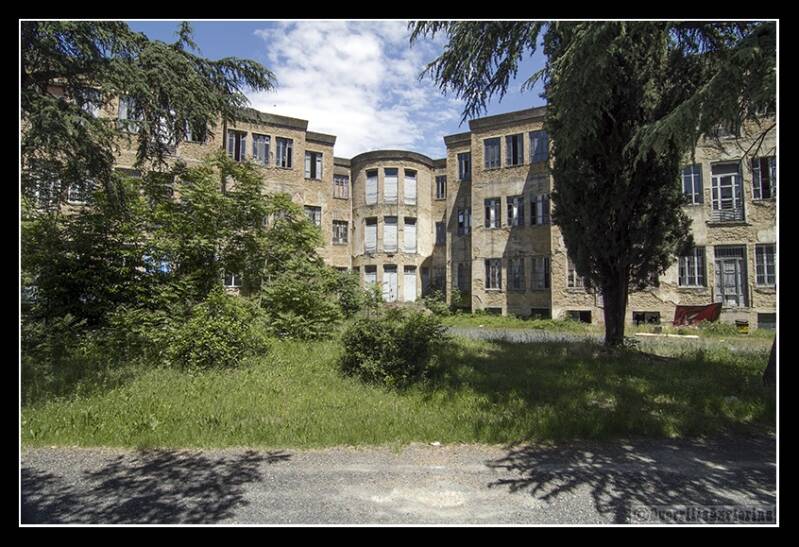
An empty washroom/toilet area.
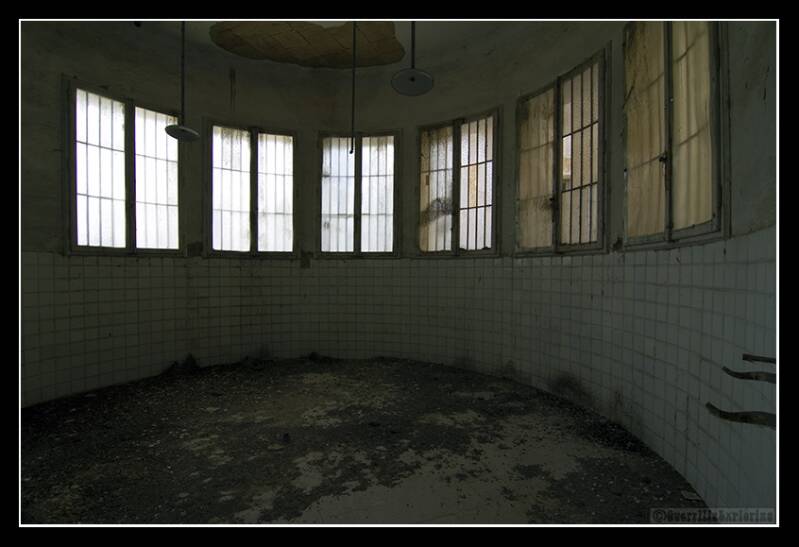
A room with either a separate monitoring room or dispensary for inmates.

I initially thought as it was on the ground floor with wide doors this might have been a garage area. However i figured it's more likely some sort of rehabilitation room, with patients being led into the tiled recess 'pool.'

Accessing the higher parts of the building above the ground floor was proving difficult. After wading through nettle bushes and bramble plants looking to relieve me of my skin, I finally found a way up. A stairwell to the upper floors.
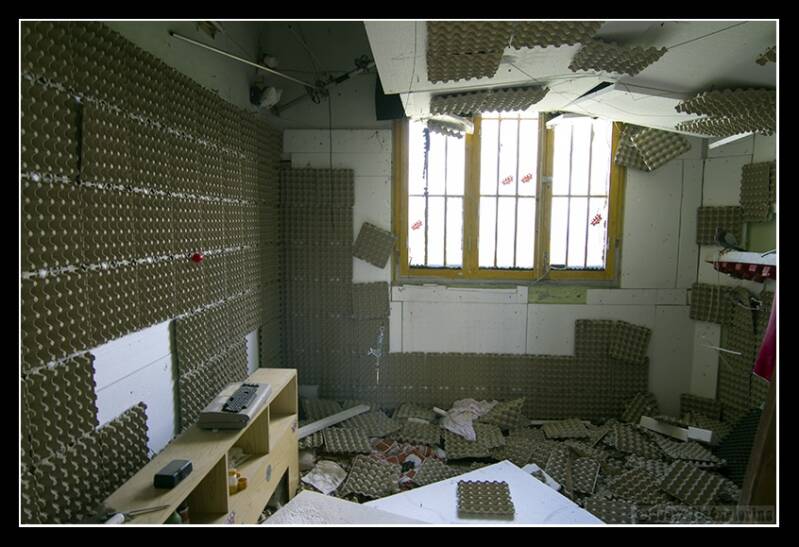
The depressing bars on the windows that kept the inmates in, with the gorgeous Tuscan views of the outside world they were denied.
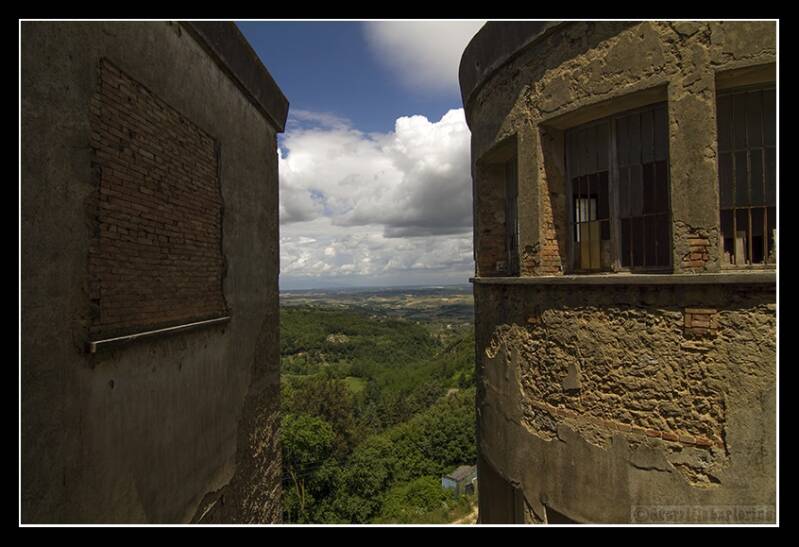
There wasn't much else to see at this site. At some point in time, it appears to have been lived in by a number of people, a commune or something. Some rooms filled with literally mountains of beer and wine bottles. A lot of rooms had unappealing furniture dotted around, often stacked up. Other rooms and hallways were just empty.
I walked up the road to the other main site, here I passed a couple of photographers from Germany who were just leaving. This site was more overgrown than the other, and there appeared to be little attempt to re-use the sites, unlike the main village and Northern buildings. These buildings were likely the pavilions.
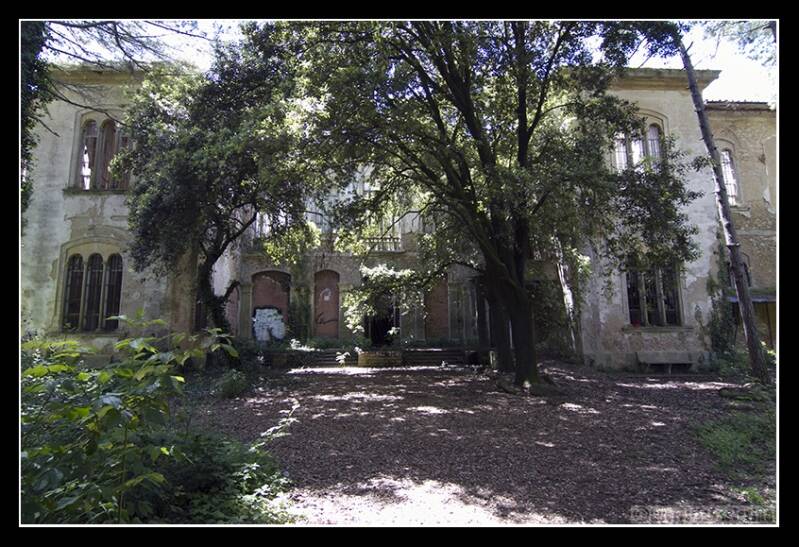
Bars were everywhere here, on doors, windows. Something more associated with prisons than a hospital.
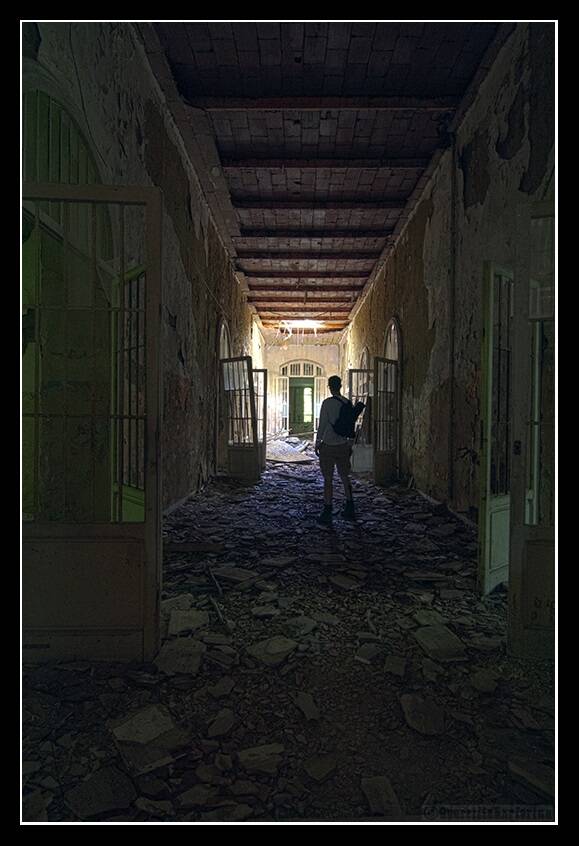
Inside the rooms with bars, large spaces where a number of beds would likely have been with patients in. If they were lucky, they wouldn't be comatose, or restricted in a straight jacket.
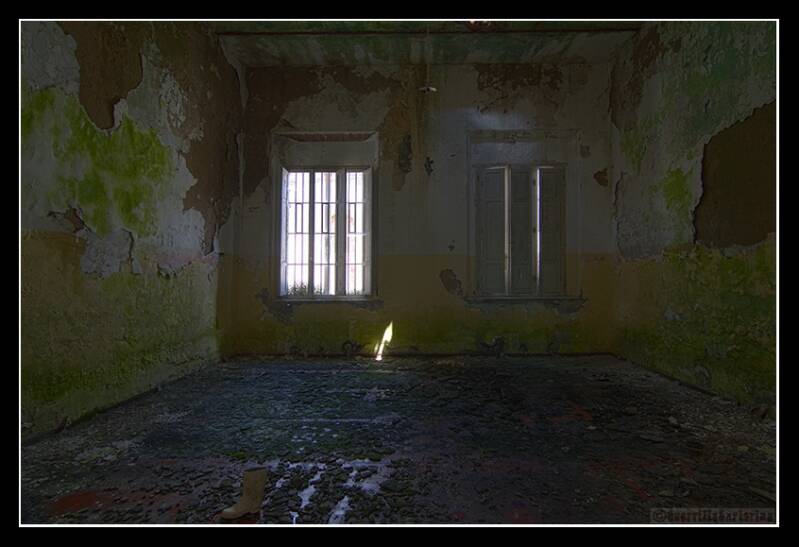
A doorway collapsing in, as the building disintegrates.
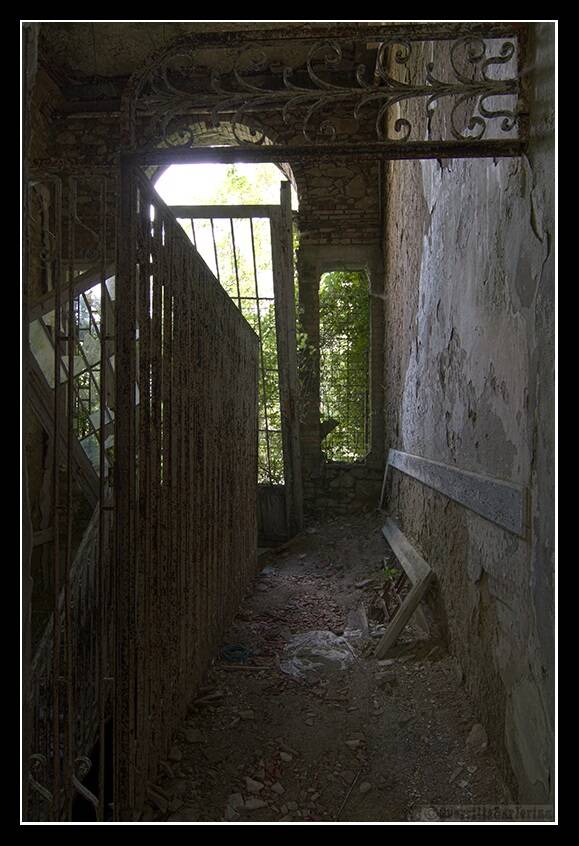
Not just the building, but the former apparatus falling into disrepair.
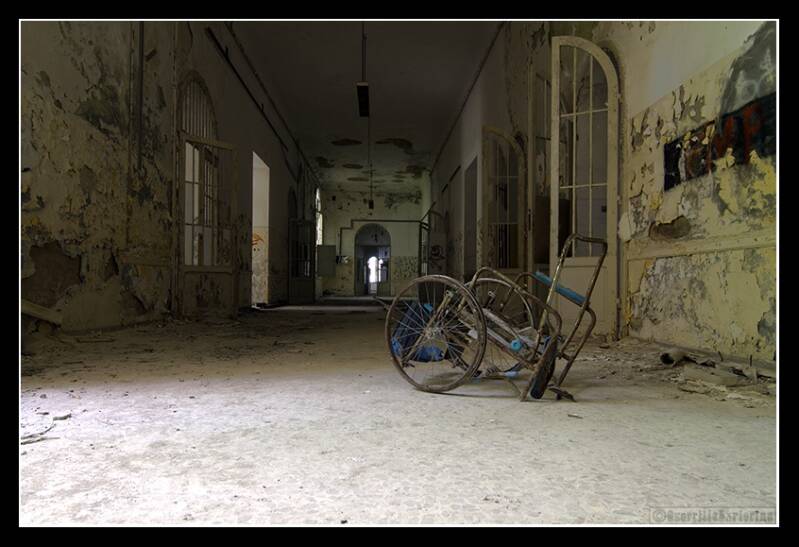
An upper hallway with the barred doors open now.
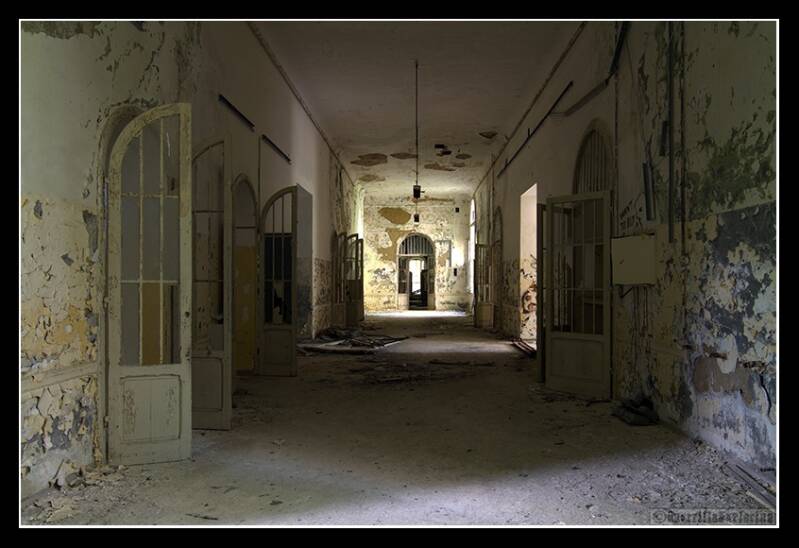
A number of rooms had been used as canvases for graffiti artists.
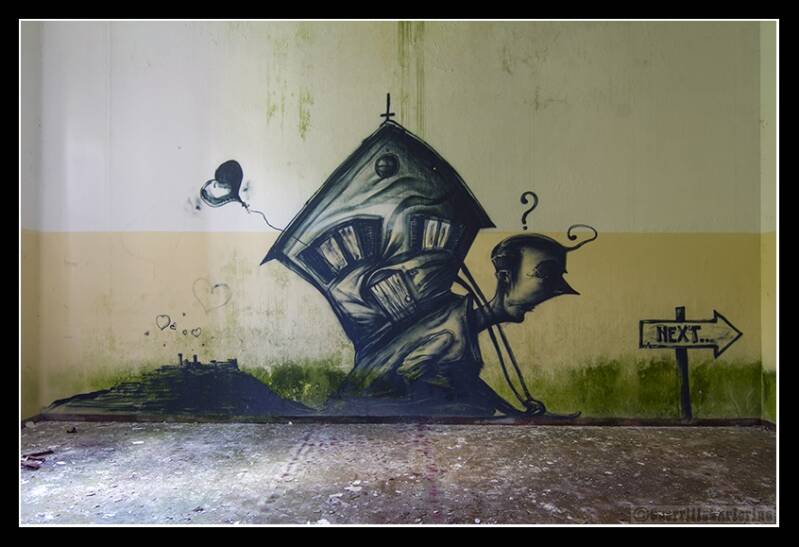
A depressing hallway of more doors with bars on, left to rot. The ceiling having already collapsed in places.
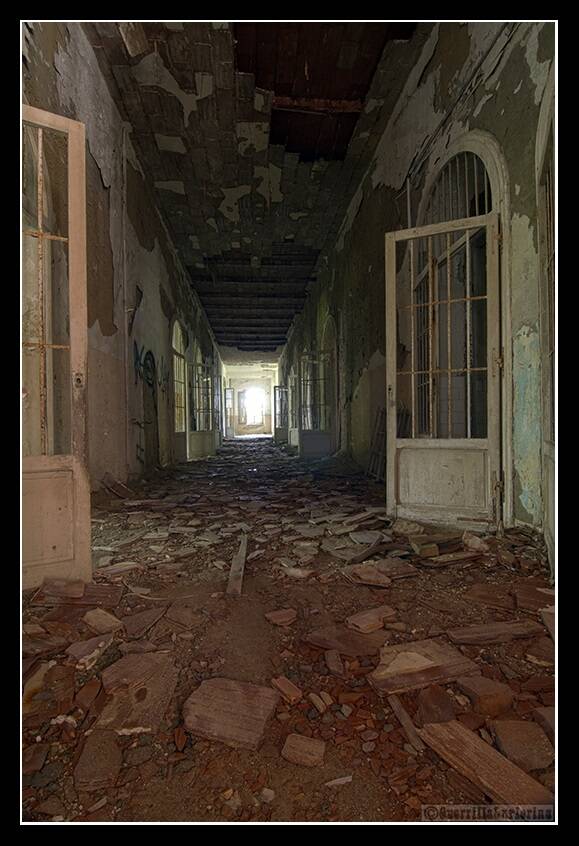
There was little else to see of interest. More hallways and barren rooms with the barred doors the only reminder of less pleasant times. I scurried off back to the town of Volterra, and met my family for a slap up feast in the sunshine instead.
Add comment
Comments